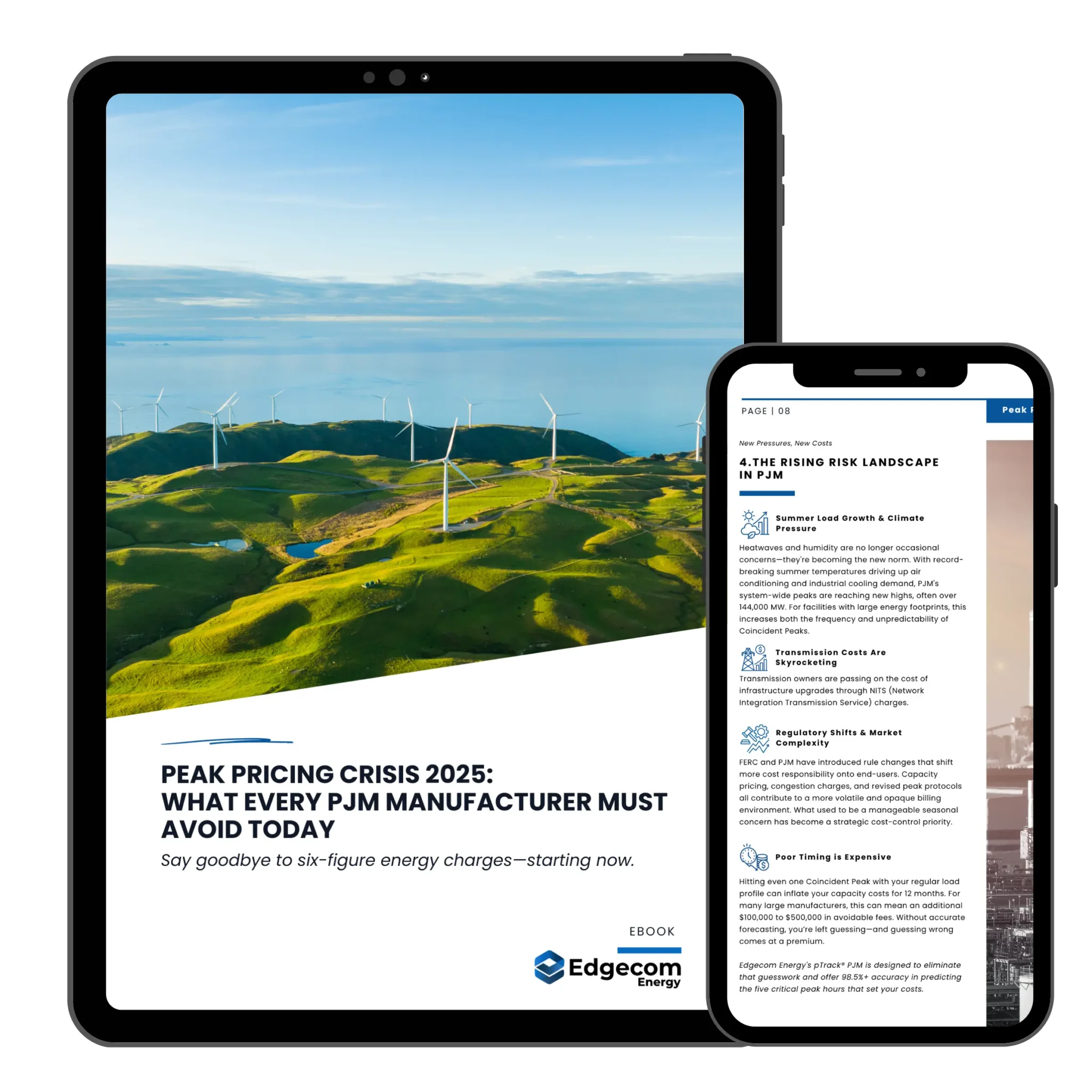Demand Response (DR) programs are used by many system operators to improve grid reliability. Unfortunately, most of the available literature will give you very technical and complex answers when describing DR. This blog post aims to explain DR in digestible and straightforward terms.
When consumers use more energy than the grid is supplying, we are susceptible to experiencing different forms of power outages. To avoid these outages, grid operators must supply enough energy to the grid when it is under the most stress. This is called peak demand. Simply, peak demand occurs when the grid is consuming the most energy or is getting close to its operating limits.
Peak demand occurs when the grid is consuming the most energy or is getting close to its operating limits.
Traditionally, grid operators met peak demand by producing more electricity or, on a longer time horizon, building more generation facilities. However, this is not an effective or sustainable solution as these power generation assets often rely on fossil fuels and are only required for a few hours a year.
Alternatively, grid operators can incentivize large consumers to reduce or shift their loads from periods of high demand to periods of low demand. This reduces the demand instead of increasing the need for supply. This is called Demand Response. Different grid operators have different names for these programs, in Ontario the most recent iteration of Demand Response is through the “Capacity Auction”.
To participate in DR, consumers can reduce their consumption during peak events by turning off AC, lights, and machinery. Consumers can also shift their load to periods of low demand through pre-cooling or by adjusting production schedules. More recently, Distributed Energy Resources (DER) such as Battery Energy Storage Systems or Thermal Storage Systems have become a popular way to reduce demand as well. Each method helps to reduce stress on the grid. Consumers who participate in DR are rewarded by receiving payments from their system operator.
To simplify the process of participating in DR programs, utilities and system operators use “aggregators” to combine the DR capacity of customers and supply it to the grid. This reduces the burden on individual facilities by transferring the complex administrative processes onto specialized energy management firms.
Edgecom Energy is an aggregator for the IESO’s Capacity Auction Demand Response Program as well as Alectra’s Non-Wires Alternative Pilot Program which is a local demand response program. The IESO is paying consumers roughly $50,000 per available Megawatt this year. Edgecom Energy helps customers manage DR participation by integrating everything for peak management, including DR, into one easy to use portal and app.
We asked Edgecom Energy’s team to share their simple explanations and thoughts on the importance of DR to Ontario’s energy market, here’s what they said:
“Demand Response helps the grid during times of stress while paying you cash. In turn, it has the following effects: it reduces grid stress, reduces carbon emissions, adds a new revenue stream for end users with a reliable payment (not savings), and leads to a better understanding of energy consumption in the facility.”
-Behdad Bahrami, Founder and CEO
“Supply and Demand should always be balanced on a traditional grid. When demand goes up, you have to increase the supply, which is costly and may only be required a few hours a year during the highest peaks of the demand. An alternative solution is for the system operator to enter into an agreement with certain consumers on the grid to reduce their load during those highest peak hours and pay them for agreeing to do so. So Demand Response is a response from the demand side of the grid’s equation when the tension is highest on the grid.”
-Dara Nafissi, Chief Growth Officer
“Demand Response works as a form of insurance for the grid operator – they might not need to call on you to reduce your usage, but they will pay you for being available to reduce on a short notice as well as paying you when they actually need you to reduce your usage. It’s a win-win for both sides of the deal, the grid operator gets extra flexibility in the form of variable capacity without building new assets and the users generate profit from their flexible energy use”
-Tanner Behrend, Energy Policy Analyst

